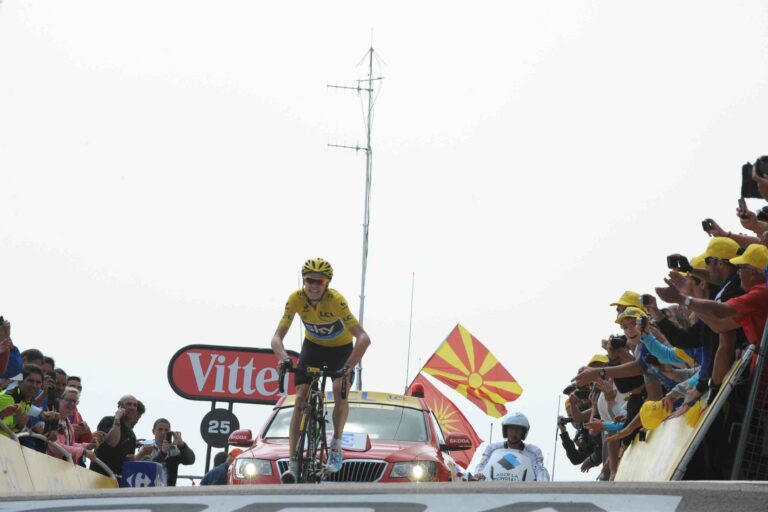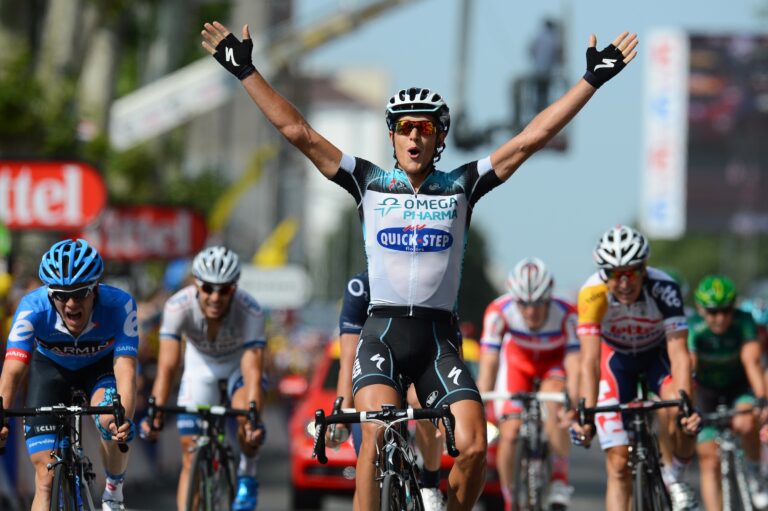Giro and Bell helmets are the first and second most popular lids in the UK, so when UK distributor, Madison, announced in January that they were parting company with the American brands, eyebrows were raised across the industry.
Having established the Easton Bell Sports helmets in their UK market leading positions, however, the Milton Keynes outfit is confident it can do the same with Lazer, and has launched the largest promotional campaign in its history to do so (quite a statement, given that Madison is also the UK distributor for Shimano and Go-Pro, among many others).
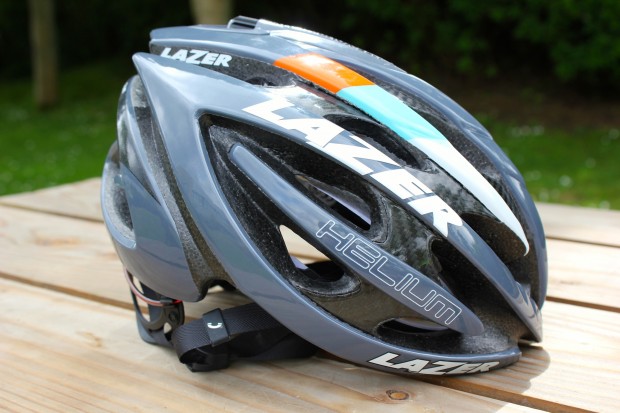
Lazer, a Belgian brand six years from its hundredth birthday, has a proven track record in the peloton and beyond: its helmets are worn by the Lotto Belisol squad of Andre Greipel and Jurgen van den Broeck, and by thousands of Australians, where Lazer is the biggest-selling brand in a country where cycle helmets are compulsory.
We returned from a recent trip to Belgium clutching Lazer’s 02 helmet (the Belgian brand is a partner in the ambitious Bike Valley project with near neighbours, Ridley Bikes and Bio Racer clothing) and were impressed by what we found. Having noted the top-tier Helium lids on the heads of the Madison Genesis and Wiggle Honda riders competing in the IG London Nocturne, we headed to the land of the concrete cow for a closer look at Lazer’s road range. Here’s what we found.
Helmets
Aeroshell
Not a helmet as such, the Aeroshell is a feature of many in the range. Lazer claim their patented vent covering device is the only one that does not require additional fixings. UCI regulations, however, stipulate that helmet attachments must be permanently fixed, so you’ll need some method of achieving this if you’re competing in events regulated by cycling’s world governing body. (Lazer bonded an Aeroshell to the compressed polystyrene of Andre Greipel’s helmet for the Tour Down Under, we understand).

Madison were keen to extol the Aeroshell’s virtues as a shield against the UK’s climate, and a device for keeping out the wind and rain as well as boosting your aerodynamic profile. Surprisingly, it can be rolled up and stowed in a back pocket, perhaps alongside your rain jacket.
The Aeroshell is available in flouro green and clear colourways, but Madison and Lazer have plans to increase the offering. We were shown a Belgian-themed cover with red, yellow, and black stripes and the lion of Flanders, intended for the cyclo-cross season. Expect to see it in your local bike shop this August.
Wasp
The Wasp is Lazer’s new range-topping aero helmet, claimed to be the fastest commercially available, and likely to be used by Lotto-Belisol at the Tour de France. Internally, there’s an auto-fit system: the cradle is sprung-loaded.
Externally, the shell is almost entirely smooth, except for a ridge (the foremost of the three ‘stripes’). Lazer call this a ‘trip wire’ and claim the disturbed air flow behind the helmet’s leading edge reduces drag. The long-drop tail falls between the shoulder blades as a further aid to an aerodynamic position.
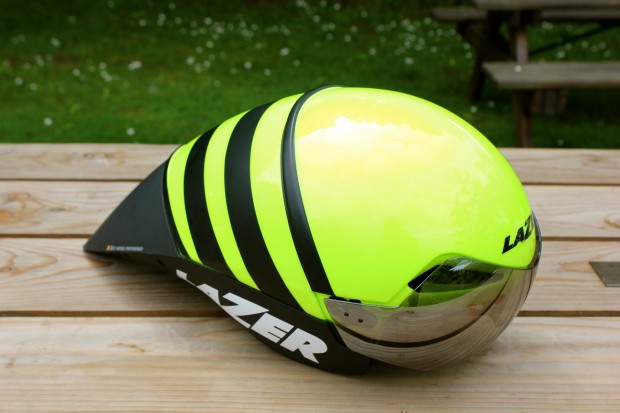
The visor, smoked or clear, can be pulled a short distance from the shell, opening a slight gap for ventilation – a one-handed operation that can be performed mid-race. Most of the ventilation, however, is at the rear of the helmet, again for aero purposes.
The Lazer RD Edition Wasp is available in five colours, including black and white, and in two sizes: medium (58cm) and large (61cm). It costs £299.99.
Tardiz
The Tardiz is another lid for time trial/triathlon use, and features a removable cover top-centre, which Lazer call the “Aquavent” – one through which water can be poured for mid-race cooling. The internal padding in the roof of the shell is perforated to channel the fluid, and the ‘Aqua Gel’ padding at the front is designed to direct water down the temples rather than over the front of the face.
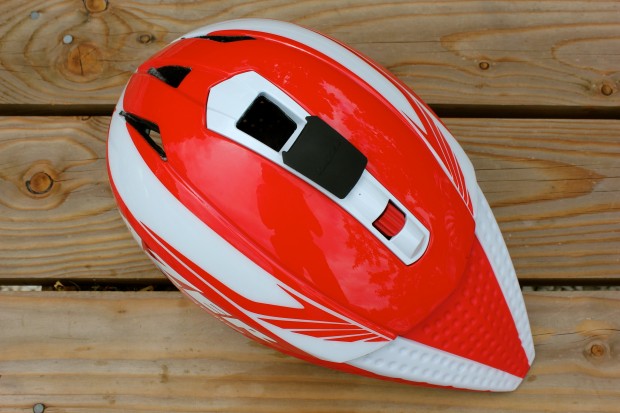
The side panels are flexible to cope with the sometimes aggressive demands of a triathlon transition. Similarly, the Rollsys fit system allows the cradle to be left ‘open’ to be pulled on easily, and tightened on the fly. The ‘Magic Buckle’ (magnetic) is intended as a further aid to quick adjustment. Clear or smoked lenses are an optional extra.
The Lazer Tardiz is available in five colours, including blue, white, and black, in two sizes, medium (58cm) and large (61cm). It costs £149.99.
Helium
The Helium is the flagship model of Lazer’s road range and comes in two flavours: the Helium and the Helium S (for ‘standard’). The upscale model includes the Aqua Gel padding, and is supplied with the detachable Aeroshell and rear light fitted in the Rollsys adjustment system. Both are available as optional extras for the Helium S, which is £30 cheaper.
The Rollsys cage can be raised up and down, allowing it be pulled to the base of the skull for a snug fit. The polystyrene foam is colour-coded to indicate two different densities, intended to absorb minor bumps and knocks as well as the major impacts of a crash.
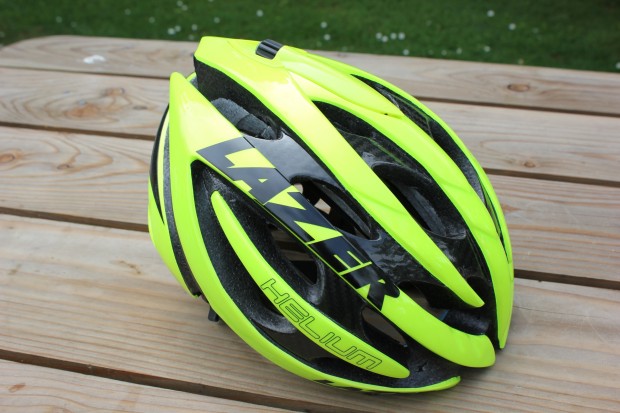
Lazer claim a weight of 265 grams (our review sample, tested in March, tipped our scales at 336 grams), making it the lightest in the range.
The Lazer Helium helmet costs £180; the Helium S costs £150. Both are available in eight colours, including rainbow stripes, and in four sizes: small (53cm), medium (56cm), large (60cm), and extra large (64cm).
Genesis
Lazer’s second-from-top offering has the most compact profile of the range, and many of the features of the top-tier Helium, including the Rigidity Brace System – a plastic cage acting as a reinforcing structure for the polystyrene shell, one that allows Lazer to create deeper vents, 19 of them in this case. The pads are made from Coolmax fabric found in many a summer jersey or sock. An Aeroshell is also available for the Genesis, but be aware that it’s a different shape to that designed for the Helium.
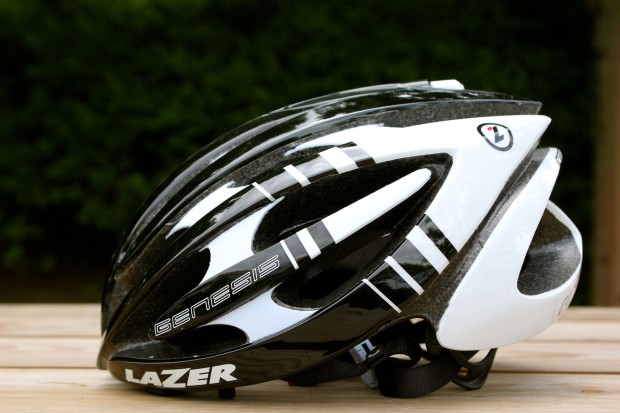
The Lazer Genesis is available in six eight colours, including fluro yellow, and in two sizes: medium (58cm) and large (61cm). It costs £124.99.
A cyclo-cross themed Genesis will be launched later this year with the aforementioned Lion of Flanders Aeroshell and a winter liner kit and ear covers for £134.99.
02
Expect to see the 02 in abundance. As mentioned earlier, we were impressed by its performance, and Madison have already signaled its intention to carve out a space for the 02 by dropping its price by £10. It’s another lid to feature the Rollsys fit system with its height-adjustable cradle, and the multi-density padding.
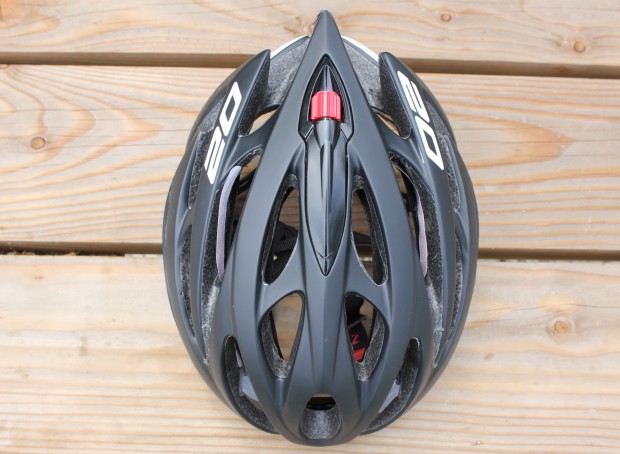
The use of the Rigidty Brace System, a technology deployed across the Lazer range on helmets from about £40 upwards, is perhaps most apparent on the 02, whose huge vents – 24 in total, five more than both the Helium and the Genesis – we felt were its most impressive feature. An Aeroshell is available, but sold separately, as is the rear light that can be mounted in the Rollsys adjustment dial.
The Lazer Genesis is available in eight colours, including a distinguished matt grey, and in two sizes: unsize (61cm) and extra large (64cm – black only). It costs £69.99.
Neon
The entry-point to Lazer’s road range is the £39.99, one that features the Rollsys system mounted in the crown of the helmet.

For riders with ponytails (our friends on, errm, sister site, Total Women’s Cycling, perhaps, this may prove an advantage over the traditional, rear-mounted adjustment dial. It’s available in white-silver, black-gold, and white-teal. There are also more conventional black and white colourways.
Eyewear
Lazer dub their eyewear collection, Vision, and it forms a key part of Madison’s UK offering from the brand. The most expensive model is £100, so it’s a range pitched at a more affordable price point than premium brands.
Magneto M1
An arm-free glass that attaches to strap-mounted magnets (any straps, by the way – Lazer or other brands), the Magneto is intended to remove pressure from the temples. A separate set of magnets can also be mounted on the helmet, allowing them to be stored ‘pro style’.
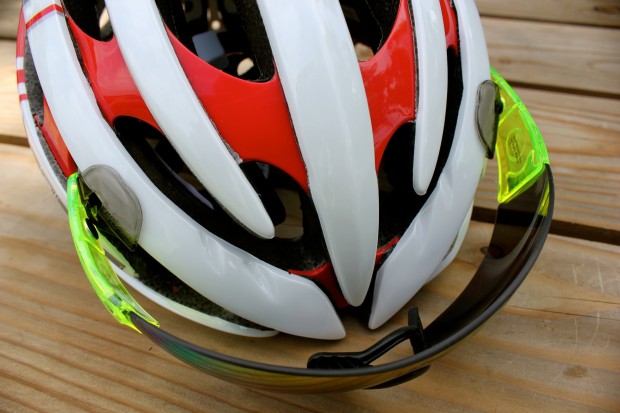
It’s supplied with three, interchangeable lenses: tinted, clear, and yellow, or a photochromatic option. Arms are also supplied, allowing the magneto to be worn for casual use or on occasions when your regular helmet, with its magnet-equipped straps, isn’t available.
The Magneto glasses are supplied with a soft case and hard case and cost £100 with photochromatic lenses, or £90 with interchangeable lenses.
Solid State – SS1
The SS1 is a more conventional design. The rubber components are designed to become more adhesive in wet conditions and avoid slippage. The arms are wire-framed, and can be shaped with the intention of enhancing the fit. Optically corrected wraparound lenses are interchangeable. There’s an optional ‘RX’ kit that allows the use of prescription glasses. Like the Magneto, the SS1 is offered in a photochromatic lens option.
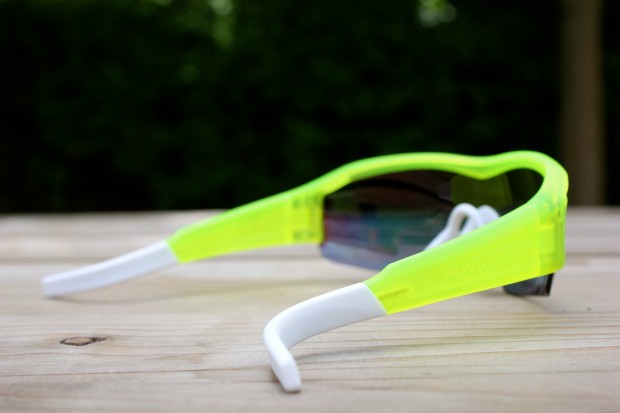
The Lazer SS1 is available in eight colours, including black, white, and yellow. It costs £69.99 with photochromic lenses and £59.99 with interchangeable lenses.
Argon AR2
The 25-gram Argon AR2 with its two-piece lens is arguably a glass to wear off the bike as well as on. Madison consider it a key offering for the women’s market, and Lazer produce it in small and medium sizes. There’s a choice of three interchangeable lenses or a photochromatic option, a six colourways for the frames, including the tortoiseshell option shown here.
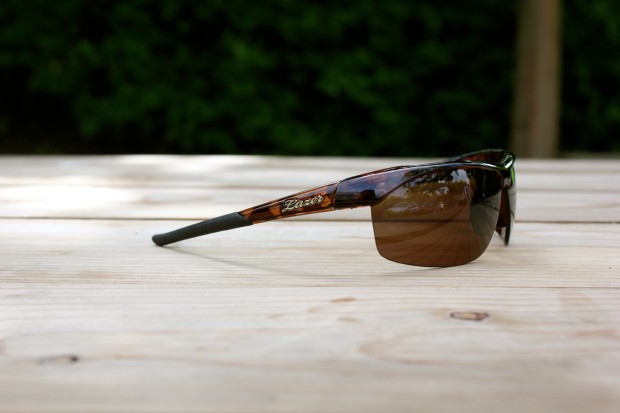
The Lazer Argon is available in eight colours, including red, white, and magenta. It costs £69.99 with photochromic lenses and £59.99 with interchangeable lenses.
Xenon X1

The Xenon X1 has more masculine styling than the Argon, and is much cheaper, priced at £29.99. It’s another offering with a two-piece lens, interchangeable lens(mirrored, smoke, or clear). The sticky, Ultragrip coating is present, and it’s supplied with a cleaning bag. The Xenon weighs 28 grams


